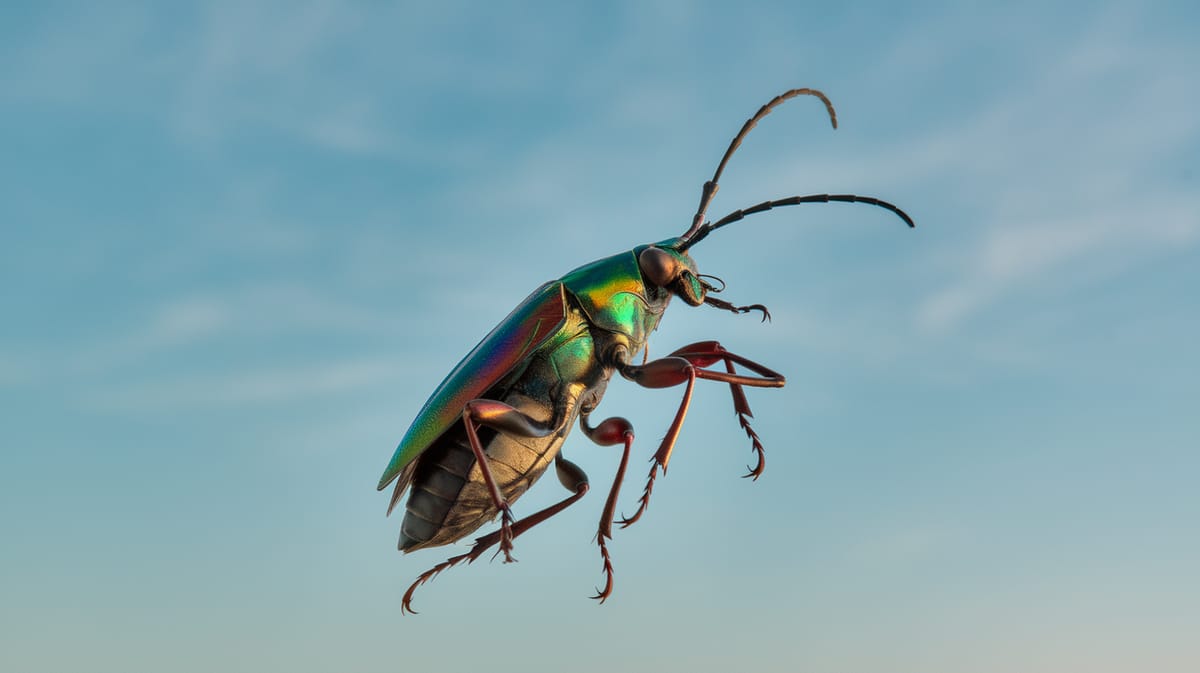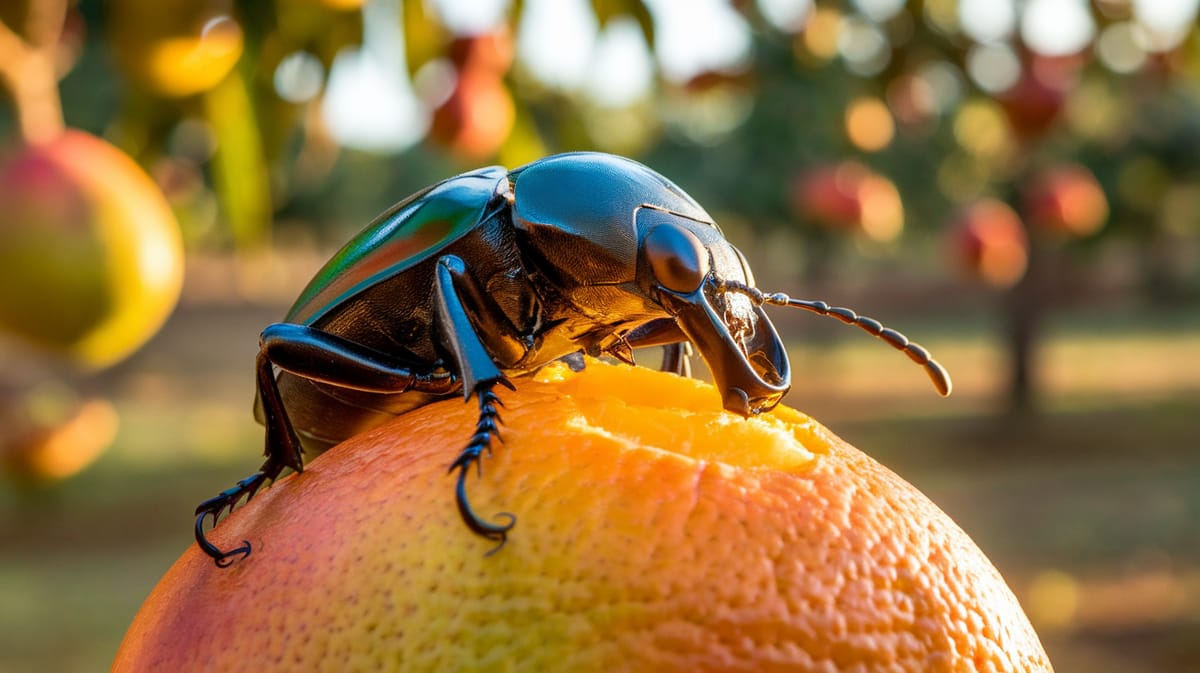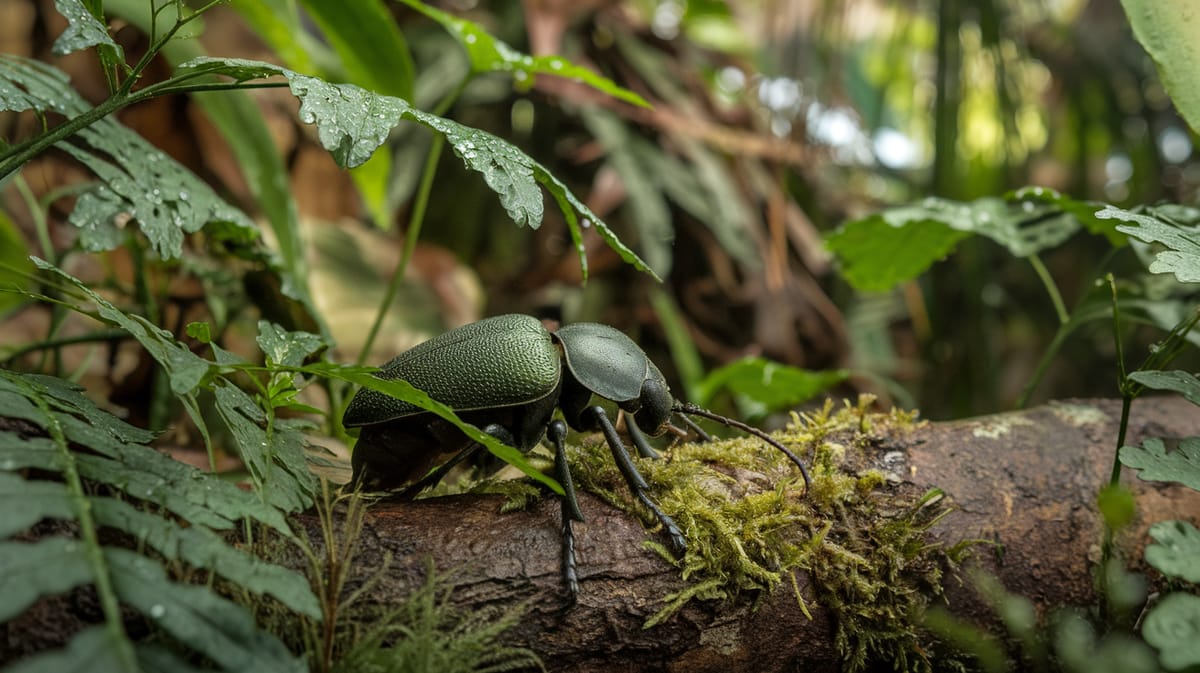Click Beetle
With a distinctive clicking sound, the Click Beetle flips itself upright when threatened, showcasing remarkable agility. These beetles play a vital role in aerating soil and controlling pests.

Key Insights at a Glance
Did You Know?
Taxonomy & Classification
Click beetles exhibit a unique survival trait with their ability to flip in the air when threatened, distinguishing their evolutionary path among insects. Let's understand the evolutionary journey and classification of these remarkable decomposers, predators.
Global Presence
The Elateridae family includes over 10,000 species found worldwide, thriving in diverse ecosystems from forests to grasslands.
Survival Adaptations
Click beetles have existed since the Jurassic period, evolving specialized clicking mechanisms to evade predators and adapt to changing environments.
Lifecycle and Growth
A remarkable journey of transformation from Egg to Adult.
Egg
Female click beetles lay eggs in soil, where they develop into larvae, absorbing nutrients for initial growth.
Larva
Known as wireworms, larvae feed on plant roots and organic matter, gradually growing and preparing for pupation.
Pupa
Larvae transform into pupae underground, reorganizing tissues to emerge as adults, completing metamorphosis.
Adult
Adults are known for their characteristic clicking mechanism, used for righting themselves and escaping predators.
Dietary Habits
A nocturnal feeder with diverse dietary preferences, it primarily consumes plant matter, small insects, and occasionally decomposing organic material.
| DIET TYPE | DESCRIPTION |
|---|---|
| Primary Diet | Primarily feeds on plant roots and seeds, often damaging crops and gardens with its larval stage. |
| Secondary Diet | Consumes other insects and larvae, serving as both a predator and scavenger within its ecosystem. |
| Occasional | Occasionally feeds on decaying plant material and fungi, especially during scarce food availability. |

Behaviour and Adaptations
Discover the fascinating survival strategies that make the Click Beetle a marvel of evolution.
Jumping Mechanism
Uses a unique spine-and-groove mechanism to flip itself into the air.
Defensive Clicking
Produces a loud clicking sound to startle predators and escape.
Larval Bioluminescence
Some larvae glow in the dark to warn predators or attract mates.
Ecosystem Impact
Click Beetles play a vital role in supporting ecological balance through their interactions with the environment.
Soil Aerators
Larvae tunnel through soil, enhancing air and water movement.
Decomposer Aids
Breaks down organic matter, enriching soil nutrients.
Prey for Wildlife
Serves as food for birds and mammals, sustaining biodiversity.
Conservation Challenges
Understanding and addressing the major threats to Click Beetle populations.
Habitat Loss
Deforestation and agricultural expansion reduce Click Beetle habitats.
Chemical Exposure
Pesticides and fertilizers harm beetle populations and ecosystems.
Climate Change
Altered weather patterns affect beetle breeding and distribution.
Frequently Asked Questions
How long do Click Beetles live?
Click Beetles typically live for one to two years. Their lifecycle includes egg, larval, pupal, and adult stages. The larval stage, known as wireworms, can last several years, depending on environmental conditions and food availability, while the adult stage is usually shorter.
What do Click Beetles eat?
Click Beetles primarily feed on plant material. As larvae, they consume roots and seeds, often causing damage to crops. Adult Click Beetles eat nectar, pollen, and sometimes other insects. Their diet varies based on the species and stage of development.
Are Click Beetles poisonous?
Click Beetles are not poisonous to humans or pets. They do not produce toxins and are generally harmless. Their primary defense mechanism is their ability to flip and create a clicking sound when threatened, which can startle predators.
Are Click Beetles endangered?
Click Beetles are not generally considered endangered. They are a widespread and diverse group with numerous species found globally. Some local populations may be affected by habitat loss, but overall, they do not face significant threats.
What do Click Beetles symbolize?
In various cultures, Click Beetles symbolize resilience and adaptability. Their unique ability to flip onto their feet after being knocked over signifies recovery and perseverance. These beetles are often associated with transformation and overcoming challenges.
Do Click Beetles bite?
Click Beetles do not bite humans. They have mandibles but use them primarily for feeding on plants. They are not aggressive and pose no threat to people. Their main defense is their clicking mechanism to escape predators.
What color are Click Beetles?
Click Beetles come in various colors, typically brown, black, or gray. Some species have distinctive markings or patterns, such as stripes or spots. Their coloration often helps them blend into their environment, providing camouflage from predators.
Does a Click Beetle have wings?
Yes, Click Beetles have wings. They possess two pairs: the hardened forewings, called elytra, and the membranous hindwings used for flight. The elytra protect the hindwings when not in use and create the clicking sound when the beetle is under threat.
What does a Click Beetle look like?
Click Beetles have elongated, slender bodies with rounded ends. They possess a unique spine on the underside used for their clicking mechanism. Their antennae are typically long and serrated. The overall appearance varies among species, with different colors and patterns.
Is a Click Beetle an insect?
Yes, a Click Beetle is an insect. It belongs to the order Coleoptera, which includes all beetles. Like other insects, Click Beetles have a three-part body: head, thorax, and abdomen, six legs, and two antennae. Their lifecycle includes complete metamorphosis.
Related Insects
Discover insects with similar characteristics to Click Beetle - including shared habitats, diets, and taxonomic classifications
Share this profile
Help others discover Click Beetle
